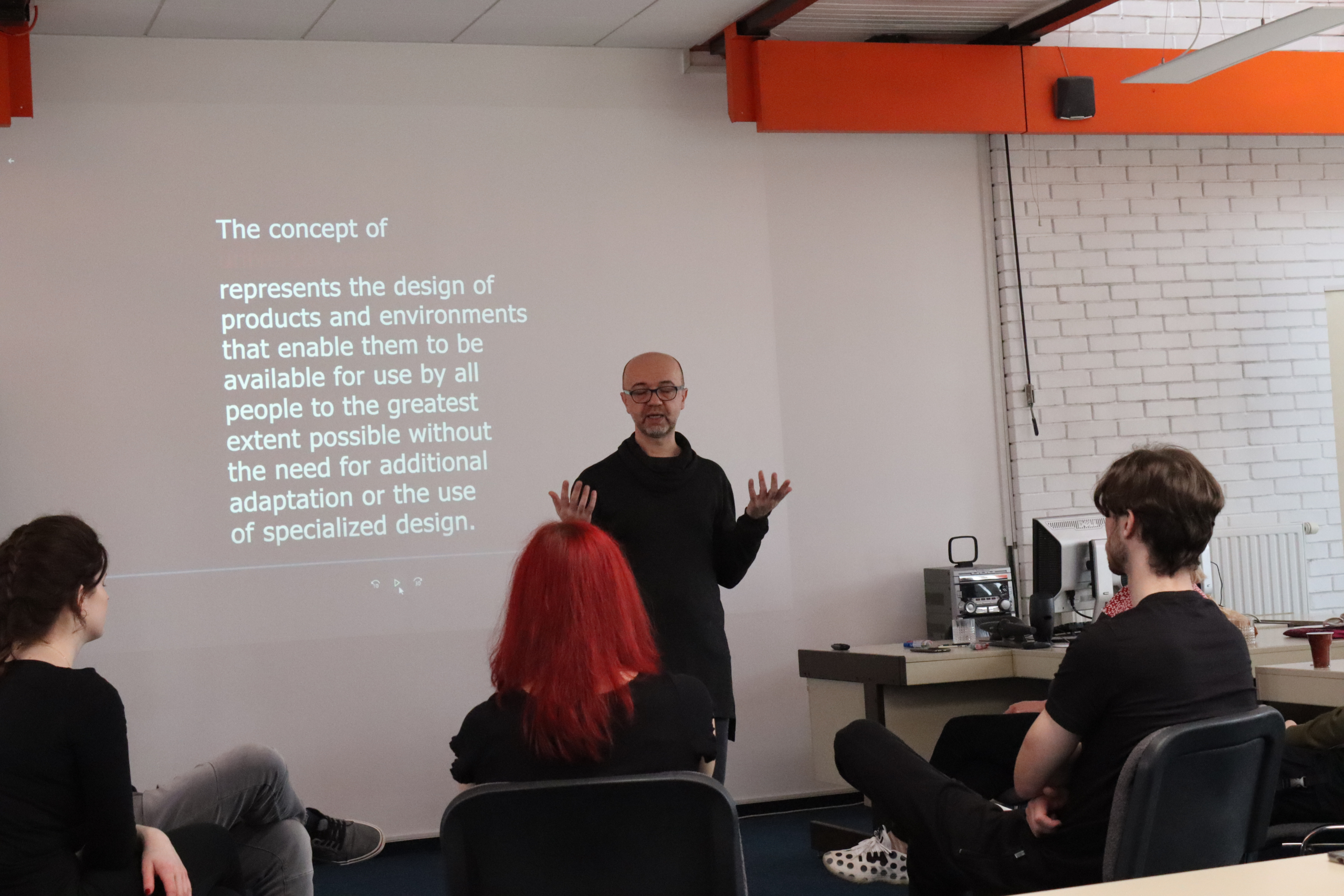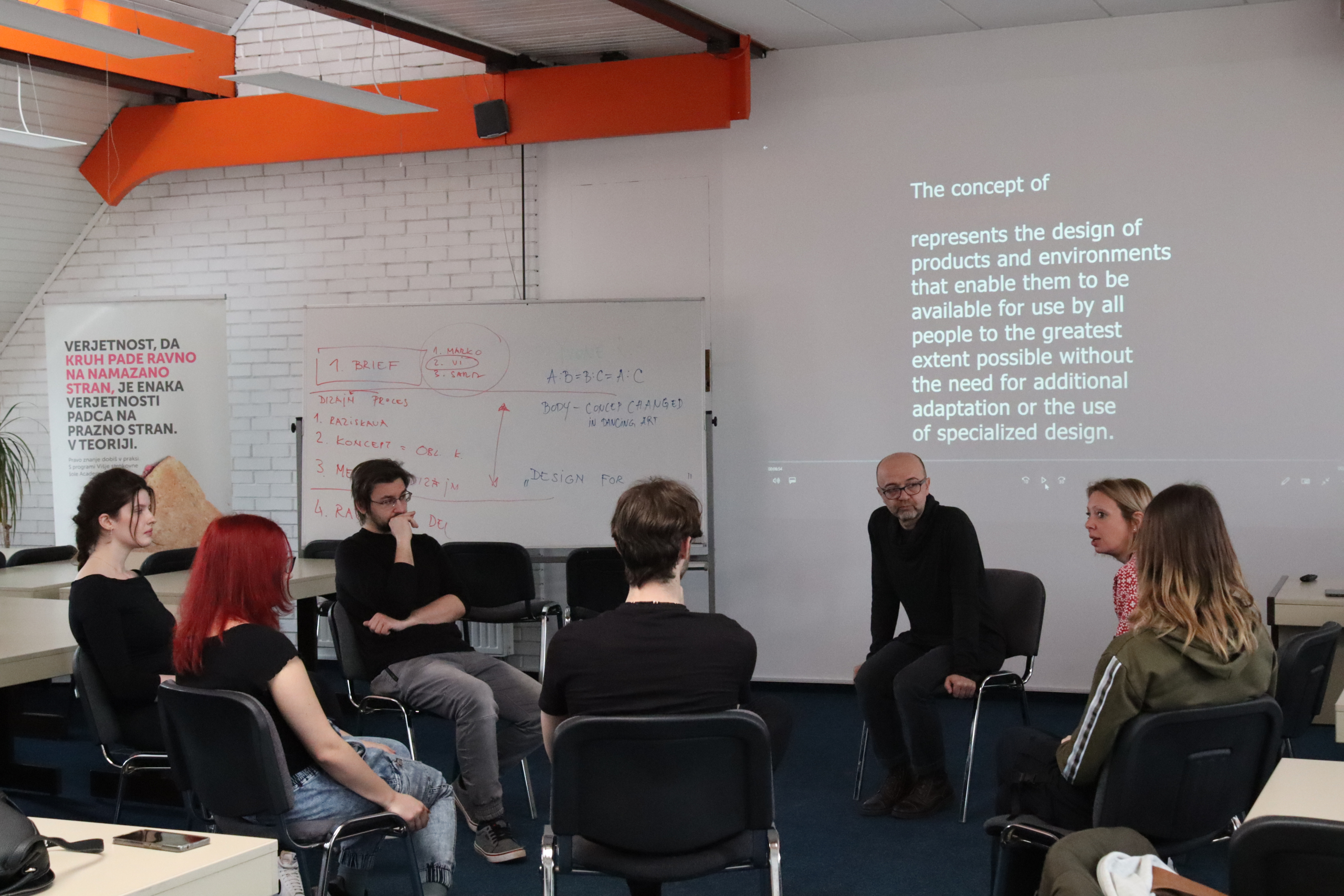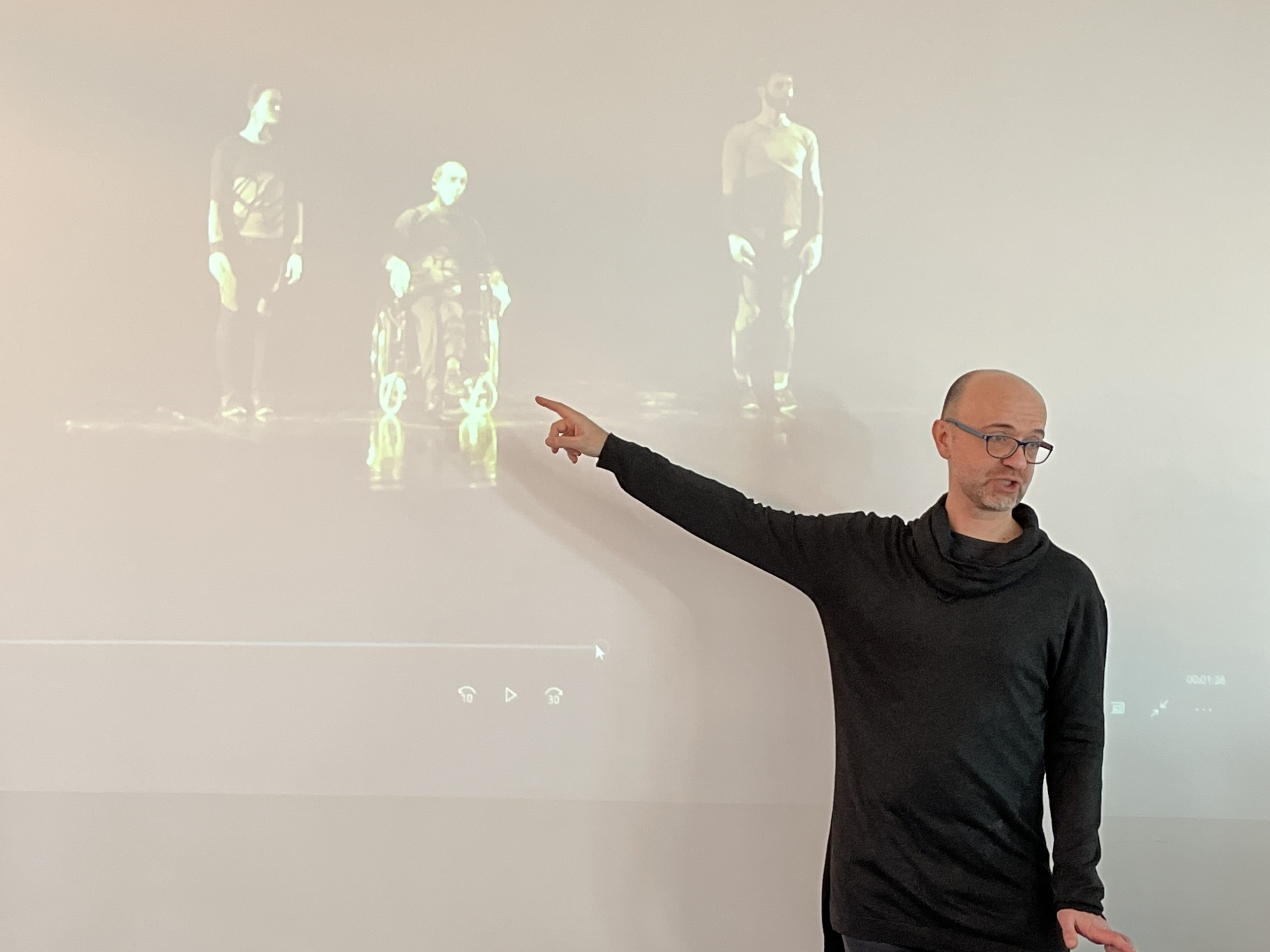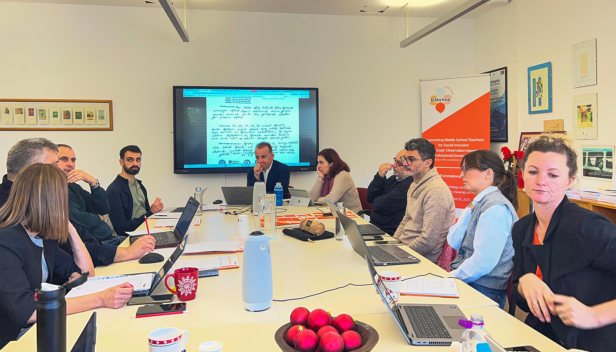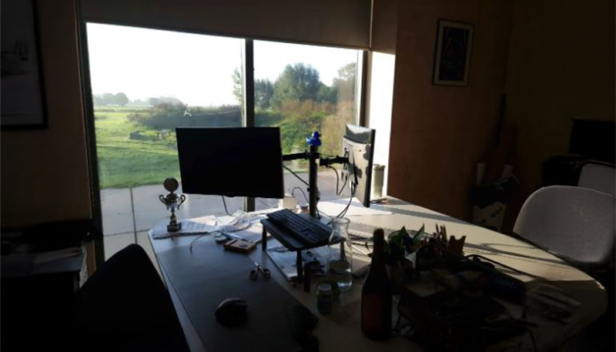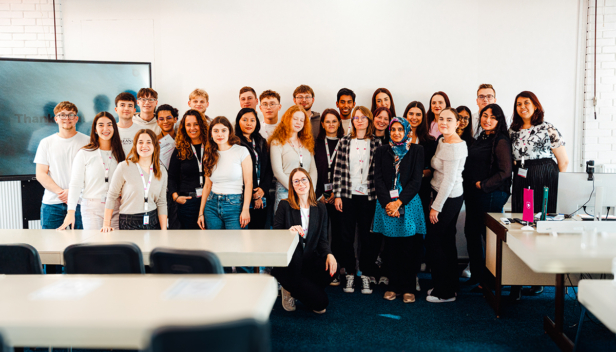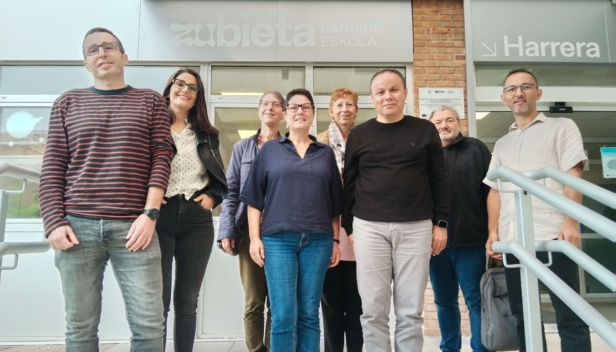Guest lecture: Art theorist, artist in the field of inclusive practices and member of the collective “Hajde da…” Marko Pejović
Graphic Design
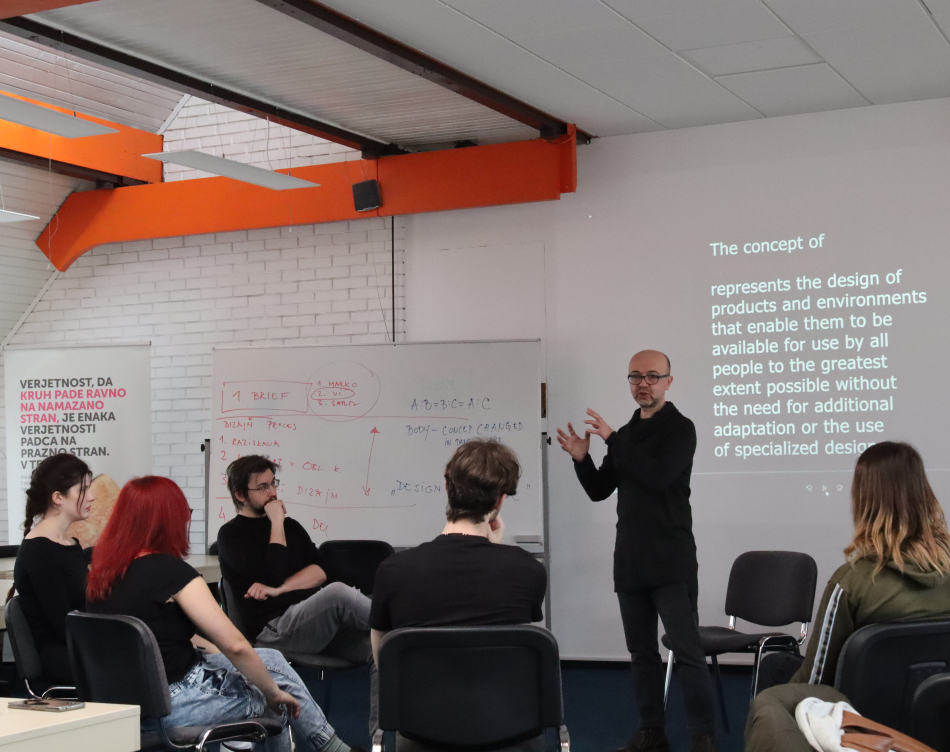
In the course Project: Graphics of the module Graphic Design (Media Production) we hosted Mr. Marko Pejović, art theorist and artist in the field of inclusive practices, also a member of the collective “Hajde da…” from Belgrade (Serbia).
Marko Pejović, who has almost 20 years of experience in the field of participatory and inclusive artistic practices, was a guest lecturer at the Graphic Design Students’ Project: Graphics course last Friday. The aim of the lecture was to introduce students to the principles of developing project concepts using the example of inclusive art projects – which Mr Pejović has developed with his collaborators over the years and for which he has received several international awards – both for his student and later professional projects.
Through dance productions, theatre performances, short films, and video installations, Mr. Pejović has sought to connect artists and members of vulnerable groups (people with disabilities, users of psychiatric services, ethnic minorities, the LGBTQ community, and young people with developmental difficulties). Through the example of the performance “Hegel and the Long List of Deceptions”, students had the opportunity to understand the historical-artistic heritage that Marko and his collaborators drew on and to use the logic of syllogism to defend the right of people with disabilities to art.
In the second part of the programme, students had the opportunity to learn about the barriers that people with disabilities face in their daily lives through various interactive exercises. This was an introduction to understanding the concept of universal design (design for all), which is the design of products and environments to make them as widely accessible as possible for use by all people without the need for additional adaptations or the use of specialised design. The students then had the opportunity to generate first ideas for the design of an art space that would closely follow the principles of universal design. This was also an opportunity to learn about existing practices in this field.
“It was a great opportunity for me to transfer my knowledge and experience, but also to learn how graphic design students think about inclusion of people with disabilities. Their reactions were encouraging, and they immediately started applying what we discussed about universal design in their student projects. When I return to my organisation, similar activities that facilitate exchange in academia will definitely become part of our strategic plan.”
In a conversation after the visit, the students mentioned how this mobility programme has helped them to understand how some of our citizens live, whom they had not had the opportunity to meet before. They also find this method of teaching, which combines theory, practical examples and experiential learning, very productive, one that keeps the energy up during the work and provides a greater amount of active knowledge.
